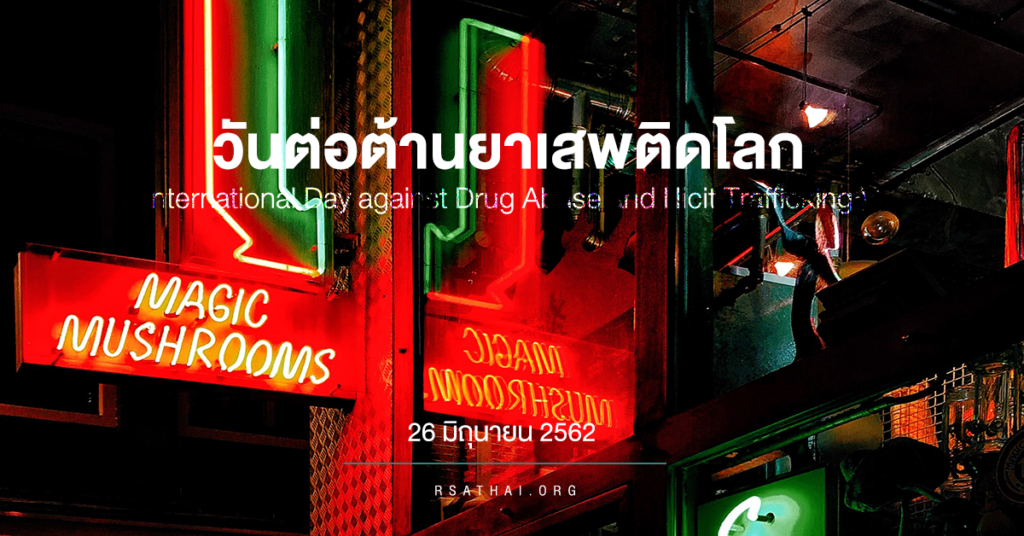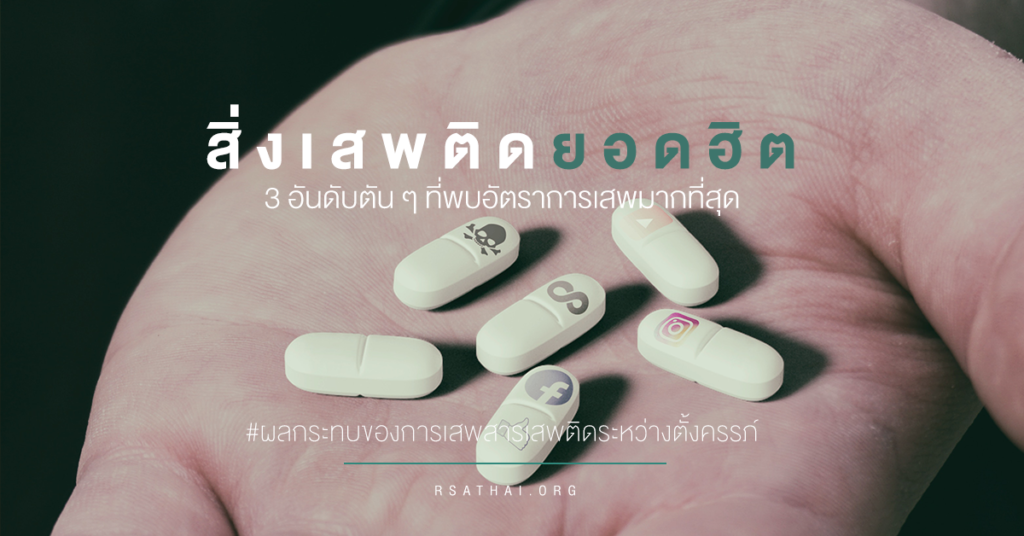June 26 of every year is the International Day against Drug Abuse and Illicit Trafficking.

The drug problem has caused severe damage to humanity worldwide. To emphasize the importance of combating drug abuse and illicit trafficking, and to promote international cooperation in fighting the drug problem, the International Conference on Drug Abuse and Illicit Trafficking (ICDAIT) was held in Vienna, Austria, from June 17-26, 1987. The conference resolved to propose to the United Nations General Assembly to designate June 26 of every year as the “International Day against Drug Abuse and Illicit Trafficking.”
In Thailand, the Office of the Narcotics Control Board, as the central agency responsible for preventing and solving drug problems in the country, presented the United Nations’ resolution on the International Day against Drug Abuse to the Cabinet meeting on June 14, 1988. The Cabinet resolved to designate June 26 of every year as the International Day against Drug Abuse, starting from 1988 onwards.
In 2019, the slogan for the International Day against Drug Abuse is: “Committed to Solve Narcotics Problem with Strong Determination” to raise public awareness of the importance of the International Day against Drug Abuse and to encourage all sectors of society to participate in preventing and solving drug problems.

When it comes to drugs… it is certain that they cause harm to the body, both to the user and those around them, as seen in news events and various media today. Today, we will discuss the case of pregnant women using drugs, which poses significant dangers to the unborn child.
Recently, there have been reports about the use of drugs (methamphetamine) making childbirth easier in pregnant women, which is a misconception and not true at all. The pharmacological effects of stimulant drugs, whether methamphetamine, ice, ecstasy, or any amphetamine derivatives, do not aid in the childbirth process.
On the contrary, the use of drugs in the amphetamine or methamphetamine group during pregnancy poses dangers leading to miscarriage, fetal death in the womb or during childbirth, premature birth, low birth weight, and congenital heart defects in the infant, brain hemorrhage, brain death, and nerve cell damage.
Children born to women who use drugs during pregnancy may have respiratory problems, persistent crying, restlessness, and abnormal feeding. As they grow, they may experience attention, memory, and behavioral disorders. Women who use drugs during pregnancy are at higher risk of infections during pregnancy than the general population and are at risk of severe postpartum hemorrhage, which can be life-threatening.
The top 3 most commonly abused drugs in Thailand
1.Cigarettes Nicotine, carbon monoxide in cigarette smoke, and tar affect the functioning of neurotransmitters such as acetylcholine, dopamine, and norepinephrine, disrupting the development of the infant’s nerve cells, causing uterine blood vessels to constrict, reducing blood flow to the placenta, resulting in insufficient nutrition and oxygen for the infant, leading to low birth weight, malnutrition during pregnancy, and increased infant mortality rates.
Additionally, it causes developmental and behavioral problems such as impaired intelligence, learning difficulties, hyperactivity, attention deficit, aggressive behavior, and socialization issues. These effects can be observed from early pregnancy until the infant is born.
Studies have found that if a mother smokes during the 4 weeks before childbirth, even a single cigarette can inhibit the DNA synthesis of the infant for several hours. Besides the impact on pregnancy, smoking increases the risk of “vascular occlusion” in women, potentially causing cerebral vascular occlusion, deep vein thrombosis, or increasing the risk of respiratory infections. The most common respiratory infection is “bronchitis” (which is 15 times more common in pregnant women who smoke than those who do not), pneumonia, influenza, and asthma (3 times more common). The impact on pregnancy includes a 5-fold increase in ectopic pregnancy rates.
2. Alcohol (liquor, beer, wine, or alcoholic beverages) The impact of alcohol on the fetus is observed when alcohol is consumed during conception or the first 3 months. The severity depends on the amount of alcohol consumed. High consumption results in the infant being born with Fetal Alcohol Syndrome (FAS), characterized by physical abnormalities such as short eye slits, a smooth philtrum, a long and thin upper lip, epicanthal folds, a flat nose, an upturned nose tip, and underdeveloped midface (midface hypoplasia).
Alcohol causes nerve cell damage, leading to impaired growth, low birth weight, and slow postnatal weight gain, small head size, and brain structure abnormalities such as anencephaly, schizencephaly, and lumbarmeningomyelocele. Intellectual development is impaired, with memory problems, abnormal movements, and a higher risk of psychiatric disorders such as anxiety disorder, depression, conduct disorder, and other behavioral issues like hyperactivity and attention deficit.
3. Amphetamines and derivatives including methamphetamine (ice, speed) and 3,4-methylenedioxy-methamphetamine (ecstasy) result in low birth weight, congenital heart defects, brain hemorrhage, brain death, nerve cell damage, small head circumference affecting attention, memory, and spatial skills, and long-term behavioral problems in children.
If pregnancy is confirmed, the best prevention method is to avoid all types of drugs, as the consequences are difficult to avoid. If there is a history of drug use before pregnancy, special care should be taken during pregnancy, and after childbirth, the infant should be taken to a pediatrician for monitoring, screening, and evaluating development and behavior periodically. However, it is best to avoid all drugs… ^ ^
Information sources:
- The impact of drug use during pregnancy: Dr. Sureelak Sujaritpong, Department of Pediatrics, Faculty of Medicine, Siriraj Hospital www.si.mahidol.ac.th
- Doctors warn against the trend of “using methamphetamine for easy childbirth” which can be fatal for both mother and child: Department of Medical Services, Ministry of Public Health https://ddc.moph.go.th/
